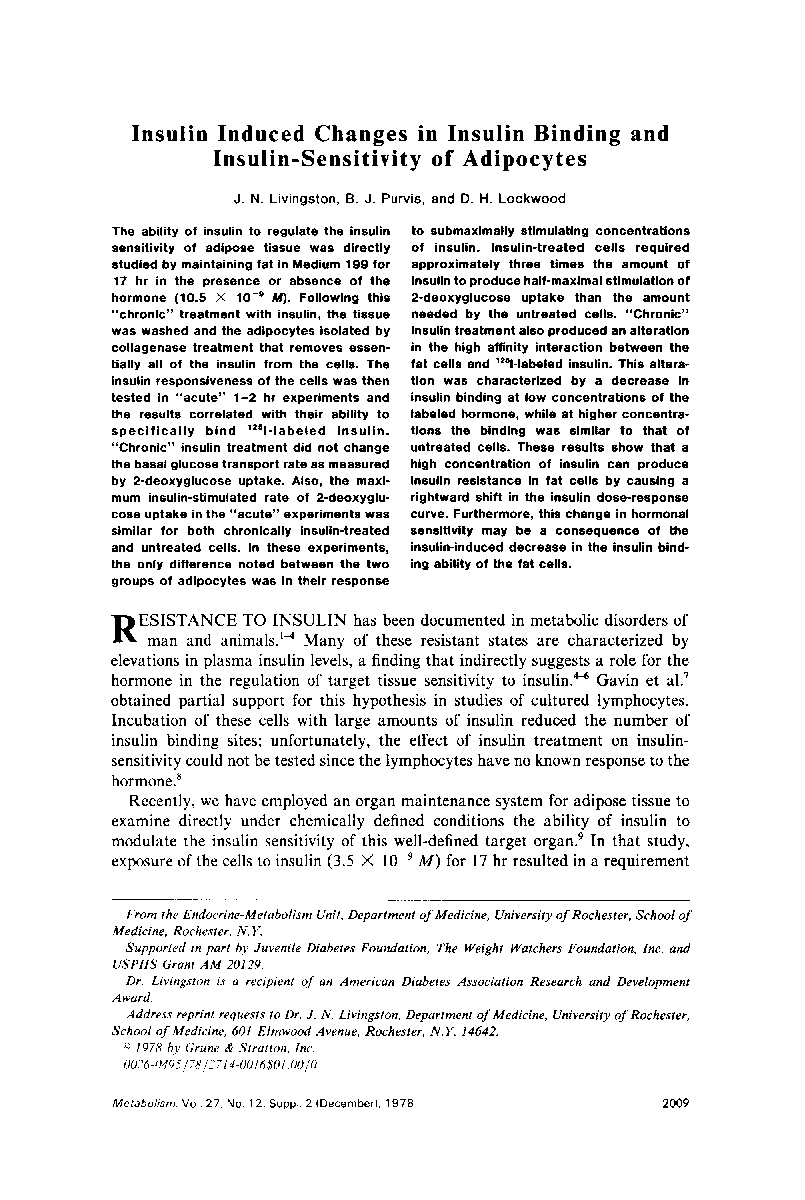| Article ID | Journal | Published Year | Pages | File Type |
|---|---|---|---|---|
| 2807933 | Metabolism | 2014 | 6 Pages |
Abstract
The ability of insulin to regulate the insulin sensitivity of adipose tissue was directly studied by maintaining fat in Medium 199 for 17 hr in the presence or absence of the hormone (10.5 X 10â9M). Following this “chronic” treatment with insulin, the tissue was washed and the adipocytes isolated by collagenase treatment that removes essentially all of the insulin from the cells. The insulin responsiveness of the cells was then tested in “acute” 1-2 hr experiments and the results correlated with their ability to specifically bind 125I-labeled insulin. “Chronic” insulin treatment did not change the basal glucose transport rate as measured by 2-deoxyglucose uptake. Also, the maximum insulin-stimulated rate of 2-deoxyglucose uptake in the “acute” experiments was similar for both chronically insulin-treated and untreated cells. In these experiments, the only difference noted between the two groups of adipocytes was in their response to submaximally stimulating concentrations of insulin. Insulin-treated cells required approximately three times the amount of insulin to produce half-maximal stimulation of 2-deoxyglucose uptake than the amount needed by the untreated cells. “Chronic” insulin treatment also produced an alteration in the high affinity interaction between the fat cells and 151-labeled insulin. This alteration was characterized by a decrease in insulin binding at low concentrations of the labeled hormone, while at higher concentrations the binding was similar to that of untreated cells. These results show that a high concentration of insulin can produce insulin resistance in fat cells by causing a rightward shift in the insulin dose-response curve. Furthermore, this change in hormonal sensitivity may be a consequence of the insulin-induced decrease in the insulin binding ability of the fat cells.
Related Topics
Life Sciences
Biochemistry, Genetics and Molecular Biology
Endocrinology
Authors
J.N. Livingston, B.J. Purvis, D.H. Lockwood,
